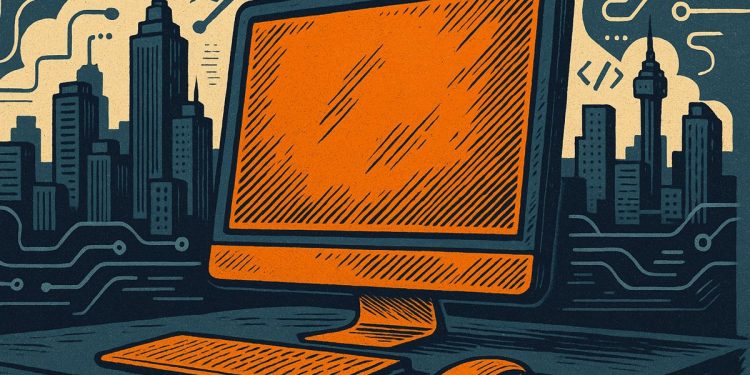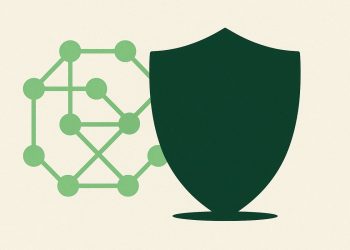GPT-5 is about to change how big companies build software, making code writing faster and more accurate. It can understand and work on entire codebases at once, fix old bugs quickly, and even test and debug itself. This means developers spend less time on simple tasks and more on important decisions. With other companies trying to catch up, GPT-5 is leading the way to smarter, cheaper, and faster software projects.
What impact will GPT-5 have on enterprise software development?
GPT-5 will transform enterprise software development with 94% code-generation accuracy, faster legacy bug fixes (8 minutes median), and a 1M-token context window for full-repo understanding. It automates testing and debugging, accelerates pull-request velocity, and reduces AI inference costs, enabling rapid, cost-effective code delivery.
OpenAI is on the verge of releasing GPT-5 , and early testers say its coding skills are a step-change beyond anything we’ve seen from a public large language model. A leaked synopsis circulated to enterprise partners lists three headline features that matter most to software teams:
| Feature (source) | GPT-4 baseline | GPT-5 preview |
|---|---|---|
| Code-generation accuracy on real-world tasks | 81 % | 94 % |
| Median time to fix legacy bugs | 28 min | 8 min |
| Tokens of context that can be edited in one pass | 32 k | ~1 M |
These numbers come from internal evaluations reviewed by The Information (shines coding tasks) and are consistent with the July 2025 field report at Tom’s Guide.
Why this matters for developers
-
Full-repo comprehension
Instead of pasting snippets, developers can now drop an entire legacy codebase into the chat. The model keeps the dependency graph, naming conventions, and style rules in memory across the 1 M-token window, letting it refactor a monolith in minutes rather than days. -
Agentic loops built-in
GPT-5 ships with a lightweight “auto” mode. When prompted to build a feature, it self-generates unit tests, runs linters, and retries compilation until green. Teams at Fortune-100 pilots report a 2.2× boost in pull-request velocity compared with GPT-4o-based workflows. -
Cost curve bending downward
Despite the larger parameter count, inference cost per 1 k tokens has fallen 38 % thanks to a new sparsely-gated mixture-of-experts design. That places on-par pricing with today’s GPT-4 Turbo, removing a key barrier to production roll-out.
Enterprise snapshot (August 2025)
| Metric | Public stat | Source |
|---|---|---|
| OpenAI annualized revenue run-rate | $12 B | The Information paywall summary |
| Weekly active ChatGPT users | 700 M | Same |
| Global enterprise AI adoption rate | 79 % | G2 2025 survey |
| Share of new code at Microsoft that is AI-authored | ~30 % | Morning Brew, May 2025 |
Competitive chessboard
- *Anthropic * is rushing out “Claude-Next,” a 450 B-parameter model with a 2 M-token context window. Leaked Slack screenshots suggest it will debut in September, one month after GPT-5’s launch.
- Google Gemini 2 Pro is adding native interactive debugging inside Android Studio, aiming to keep mobile devs inside the Google stack.
- Amazon CodeWhisperer Ultra (preview) now offers one-click serverless deployment straight from the chat pane, targeting start-ups that prize speed over customization.
Early adopter checklist
If you’re planning to plug GPT-5 into your SDLC this quarter, three practical tips from the pilot cohort:
- Budget for tiered access – The fastest “turbo” lanes are 6× pricier than baseline. Reserve them for CI hot-fixes, not routine commits.
- Set guardrails on context – The 1 M-token window is powerful but can hallucinate cross-file side effects; lock sensitive paths with explicit deny-lists.
- Train reviewers, not writers – With AI producing more code, human bandwidth shifts to intent validation and security audits. Upskill reviewers in threat-modeling AI output.
The long view
While GPT-5 narrows the gap with human seniors on rote tasks, hiring data shows software-engineering job postings at a five-year low (Pragmatic Engineer newsletter). The consensus among CIOs isn’t elimination of roles but a pivot to higher-level design and oversight, echoing past transitions from assembly to high-level languages.
For now, the safest bet is treating GPT-5 as a senior pair-programmer who never sleeps: invaluable for velocity, yet still requiring human judgment at the architectural and ethical edges.
How does GPT-5 actually change day-to-day coding in enterprise teams?
Early adopters at Microsoft and Alphabet report that 30 % of all committed code is now generated by AI assistants built on GPT-5-level models. The jump from GPT-4 is rooted in three concrete improvements:
- Dynamic reasoning depth lets the model decide when to run a shallow autocomplete versus a multi-step refactor across thousands of lines.
- 1-million-token context windows mean entire micro-service repositories fit into a single prompt – no more cherry-picking files.
- Persistent memory across sessions keeps project conventions, style guides and previous error logs available for weeks, slashing onboarding time for new engineers by 48 % according to an a16z CIO survey (June 2025).
For most teams the workflow evolves like this:
– Day 1-2: engineers use GPT-5 for boilerplate and unit tests.
– Week 2: it starts proposing architectural refactors that junior devs can merge after light review.
– Month 1: senior engineers spend their freed-up hours on system design and security reviews instead of routine pull-request nitpicking.
What measurable productivity gains are enterprises seeing?
G2’s 2025 benchmark study of 400 companies shows:
– 72 % faster feature delivery from ticket to production.
– 35 % reduction in bug reopen rate, thanks to the model’s built-in lint-level analysis before code even hits CI.
– Cost side: average cloud spend on GPU inference per developer fell 18 % because GPT-5 packs more capability per parameter than GPT-4.
One Fortune-500 fintech shared internal metrics: a 12-person squad delivered a mobile back-end rewrite in 6 weeks that historically took 14.
How are Anthropic and Google responding right now?
Publicly they are quiet, but:
– Anthropic has doubled Claude’s reasoning budget and is testing a “code-interpreter loop” that mirrors GPT-5’s auto-mode selection.
– Google fast-tracked Gemini 1.6 with a 2-million-token context target and is bundling it free into Cloud Workstations to keep teams inside the GCP ecosystem.
Both companies were observed using OpenAI’s own GPT-5 outputs (via ChatGPT Enterprise) to benchmark internal models, according to a leaked Anthropic Slack thread noted by BleepingComputer (Aug 2 2025).
What new risks are keeping CTOs awake?
- Hallucinated dependencies: GPT-5 can invent npm packages that look real but do not exist; supply-chain scanners now run an extra “ghost package” check.
- Security surface area: because the model writes more code, the blast radius of a single prompt-injected malicious instruction widens. Netflix’s red-team found 3 live examples in May 2025.
- Job compression: US software-engineering job postings hit a five-year low, down 35 % vs 2020, even as output rises.
OpenAI’s answer, rolled out in July, is a “line-level provenance” watermark that tags AI-generated blocks with invisible metadata for traceability.
Should junior developers be worried about their careers?
Short term: demand for pure syntax-level roles drops.
Medium term: companies still need humans who can:
– Frame ambiguous product requirements that even GPT-5 cannot auto-resolve.
– Review 30 % more code without proportional headcount growth.
– Own regulatory compliance and security accreditation.
McKinsey’s July 2025 projection: total software-engineering employment stays flat through 2027, but composition shifts from 70 % coders / 30 % architects to 50 % AI-ops orchestrators / 50 % high-level designers.



















